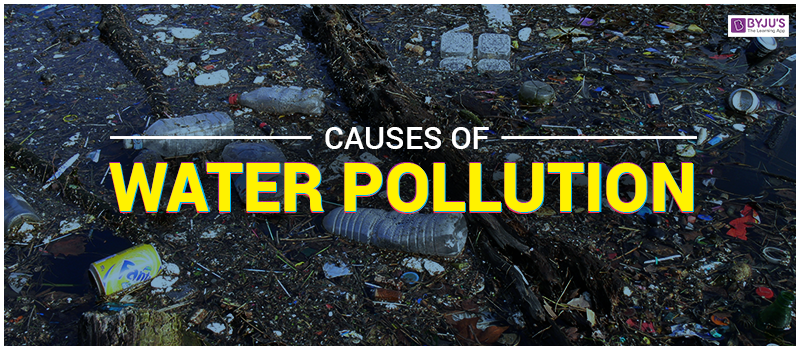The earth has more than two-thirds of its surface covered with water. This translates to just over 1 octillion liters (1,260,000,000,000,000,000,000 liters) of water distributed in the oceans, rivers, lakes and streams.
That is a lot of water, however, less than 0.3% is accessible for human consumption. As commercialization and industrialization have progressed, that number continues to dwindle down. Furthermore, inefficient and outdated practices, lack of awareness and a plethora of other circumstances have led to water pollution.
What is Water Pollution?
Water pollution can be defined as the contamination of water bodies. Water pollution is caused when water bodies such as rivers, lakes, oceans, groundwater, and aquifers get contaminated with industrial and agricultural effluents.
When water gets polluted, it adversely affects all lifeforms that directly or indirectly depend on this source. The effects of water contamination can be felt for years to come.
Sources Of Water Pollution
- Urbanization.
- Deforestation.
- Industrial effluents.
- Social and Religious Practices.
- Use of Detergents and Fertilizers.
- Agricultural runoffs- Use of insecticides and pesticides.

One of the primary causes of water pollution is the contamination of water bodies by toxic chemicals. As seen in the example mentioned above, the dumped plastic bottles, tins, water cans and other wastes pollute the water bodies. These result in water pollution, which harms not just humans, but the whole ecosystem. Toxins drained from these pollutants, travel up to the food chain and eventually affect humans. In most cases, the outcome is destructive to only local population and species, but it can have an impact on a global scale too.
Nearly 6 billion kilograms of garbage is dumped every year in the oceans. Apart from industrial effluents and untreated sewage, other forms of unwanted materials are dumped into various water bodies. These can range from nuclear waste to oil spills – the latter of which can render vast areas uninhabitable.
Effects Of Water Pollution
The effect of water pollution depends upon the type of pollutants and its concentration. Also, the location of water bodies is an important factor to determine the levels of pollution.
- Water bodies in the vicinity of urban areas are extremely polluted. This is the result of dumping garbage and toxic chemicals by industrial and commercial establishments.
- Water pollution drastically affects aquatic life. It affects their metabolism, behaviour, causes illness and eventual death. Dioxin is a chemical that causes a lot of problems from reproduction to uncontrolled cell growth or cancer. This chemical is bioaccumulated in fish, chicken and meat. Chemicals such as this travel up the food chain before entering the human body.
- The effect of water pollution can have a huge impact on the food chain. It disrupts the food-chain. Cadmium and lead are some toxic substances, these pollutants upon entering the food chain through animals (fish when consumed by animals, humans) can continue to disrupt at higher levels.
- Humans are affected by pollution and can contract diseases such as hepatitis through faecal matter in water sources. Poor drinking water treatment and unfit water can always cause an outbreak of infectious diseases such as cholera etc.
- The ecosystem can be critically affected, modified and destructured because of water pollution.
Minamata Incident
The Minamata Incident marked one of the worst cases of water pollution.
In 1932, a factory in Minamata City, Japan began dumping its industrial effluent – Methylmercury, into the surrounding bay and the sea. Methylmercury is incredibly toxic to humans and animals alike, causing a wide range of neurological disorders.
Its ill-effects were not immediately noticeable. However, this all changed as methylmercury had started to bioaccumulate inside shellfishes and fish in the Minamata Bay. These affected organisms were then caught and consumed by the local population. Soon, the ill-effects of methylmercury was becoming apparent.
Initially, animals such as cats and dogs were affected by this. The city’s cats would often convulse and make strange noises before dying – hence, the term “dancing cat disease” was coined. Soon, the same symptoms were observed in people, though the cause was not apparent at the time.
Other affected people showed symptoms of acute mercury poisoning such as ataxia, muscle weakness, loss of motor coordination, damage to speech and hearing etc. In severe cases, paralysis occurred, which was followed by coma and death. These diseases and deaths continued for almost 36 years before it could be officially acknowledged by the government and the organization.
Since then, various control measures of water pollution have been adopted by the government of Japan to curb such environmental disasters in the future.
Pollution of the Ganges
Pollution of the Ganges is also driving some of the distinct fauna to extinction. The Ganges River shark is a critically endangered species that belong to the order Carcharhiniforms. The Ganges River dolphin is another endangered species of dolphin that is found in the tributaries of the Ganges and Brahmaputra rivers.
As per a survey, by the end of 2026, around 4 billion people will face a shortage of water. Presently, around 1.2 billion people worldwide do not have access to clean, potable water and proper sanitation. It is also projected that nearly 1000 children die every year in India due to water-related issues. Groundwater is an important source of water, but unfortunately, even that is susceptible to pollution. Hence, water pollution is quite an important social issue that needs to be addressed promptly.
Control Measures of Water Pollution
A very special plant, the Water Hyacinth can absorb dissolved toxic chemicals such as cadmium and other such elements. Establishing these in regions prone to such kinds of pollutants will reduce the adverse effects to a large extent.









1 Comments
meet sailendra
ReplyDeleteIf you have any idea on which i have to post next blog related to my niches. Please let me know.